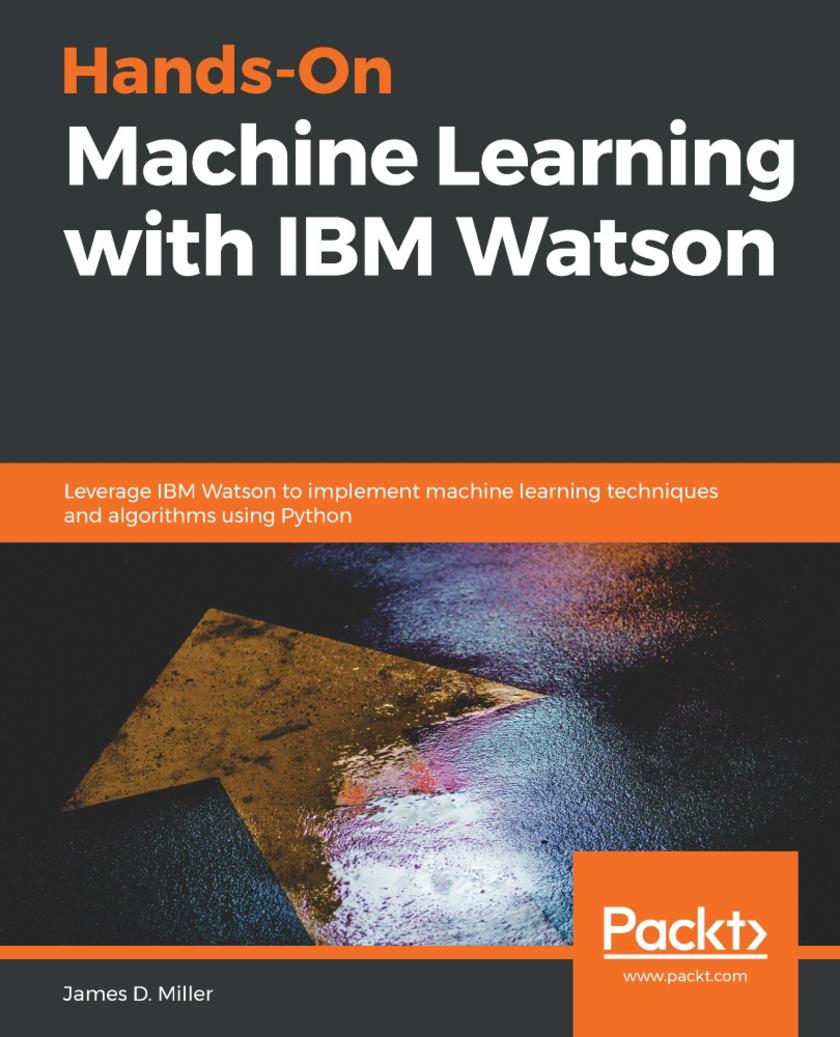
Hands-On Machine Learning with IBM Watson
¥73.02
Learn how to build complete machine learning systems with IBM Cloud and Watson Machine learning services Key Features * Implement data science and machine learning techniques to draw insights from real-world data * Understand what IBM Cloud platform can help you to implement cognitive insights within applications * Understand the role of data representation and feature extraction in any machine learning system Book Description IBM Cloud is a collection of cloud computing services for data analytics using machine learning and artificial intelligence (AI). This book is a complete guide to help you become well versed with machine learning on the IBM Cloud using Python. Hands-On Machine Learning with IBM Watson starts with supervised and unsupervised machine learning concepts, in addition to providing you with an overview of IBM Cloud and Watson Machine Learning. You'll gain insights into running various techniques, such as K-means clustering, K-nearest neighbor (KNN), and time series prediction in IBM Cloud with real-world examples. The book will then help you delve into creating a Spark pipeline in Watson Studio. You will also be guided through deep learning and neural network principles on the IBM Cloud using TensorFlow. With the help of NLP techniques, you can then brush up on building a chatbot. In later chapters, you will cover three powerful case studies, including the facial expression classification platform, the automated classification of lithofacies, and the multi-biometric identity authentication platform, helping you to become well versed with these methodologies. By the end of this book, you will be ready to build efficient machine learning solutions on the IBM Cloud and draw insights from the data at hand using real-world examples. What you will learn * Understand key characteristics of IBM machine learning services * Run supervised and unsupervised techniques in the cloud * Understand how to create a Spark pipeline in Watson Studio * Implement deep learning and neural networks on the IBM Cloud with TensorFlow * Create a complete, cloud-based facial expression classification solution * Use biometric traits to build a cloud-based human identification system Who this book is for This beginner-level book is for data scientists and machine learning engineers who want to get started with IBM Cloud and its machine learning services using practical examples. Basic knowledge of Python and some understanding of machine learning will be useful.
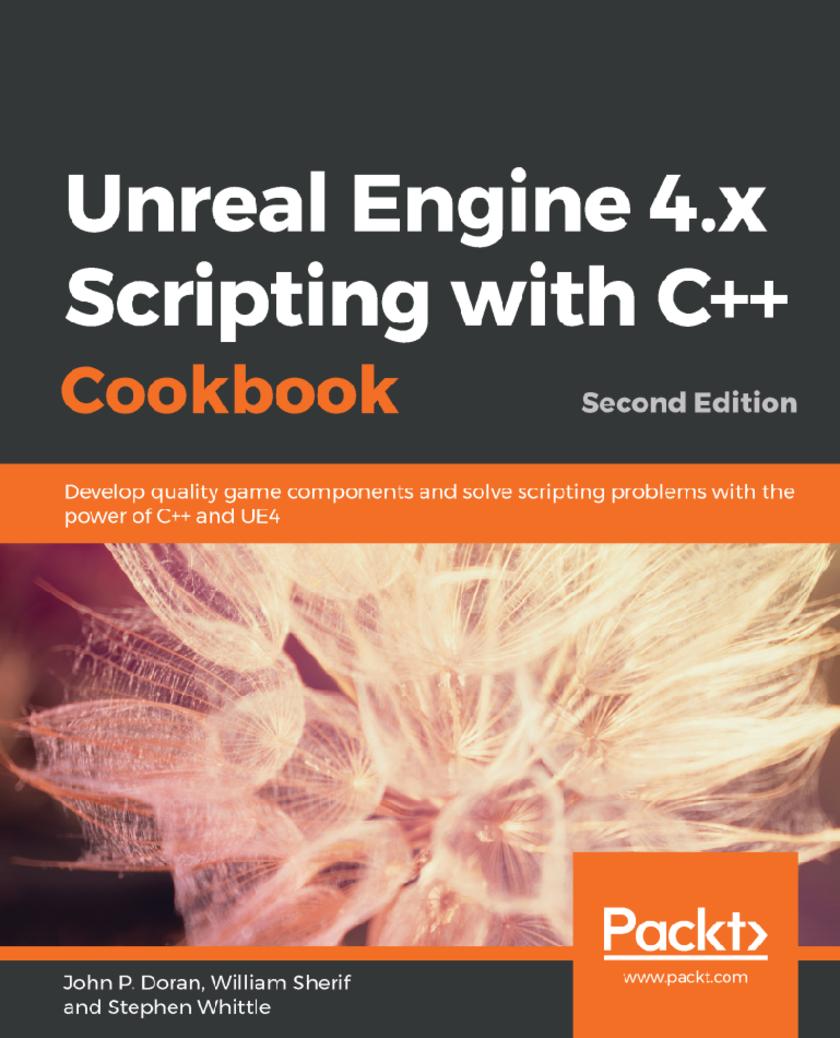
Unreal Engine 4.x Scripting with C++ Cookbook
¥73.02
Write efficient, reusable scripts to build custom characters, game environments, and control enemy AI Key Features * Build captivating multiplayer games using Unreal Engine and C++ * Incorporate existing C++ libraries into your game to add extra functionality such as hardware integration * Practical solutions for memory management, error handling, inputs, and collision for your game codebase Book Description Unreal Engine 4 (UE4) is a popular and award-winning game engine that powers some of the most popular games. A truly powerful tool for game development, there has never been a better time to use it for both commercial and independent projects. With more than 100 recipes, this book shows how to unleash the power of C++ while developing games with Unreal Engine. This book takes you on a journey to jumpstart your C++ and UE4 development skills. You will start off by setting up UE4 for C++ development and learn how to work with Visual Studio, a popular code editor. You will learn how to create C++ classes and structs the Unreal way. This will be followed by exploring memory management, smart pointers, and debugging your code. You will then learn how to make your own Actors and Components through code and how to handle input and collision events. You will also get exposure to many elements of game development including creating user interfaces, artificial intelligence, and writing code with networked play in mind. You will also learn how to add on to the Unreal Editor itself. With a range of task-oriented recipes, this book provides actionable information about writing code for games with UE4 using C++. By the end of the book, you will be empowered to become a top-notch developer with UE4 using C++ as your scripting language! What you will learn * Create C++ classes and structs that integrate well with UE4 and the Blueprints editor * Discover how to work with various APIs that Unreal Engine already contains * Utilize advanced concepts such as events, delegates, and interfaces in your UE4 projects * Build user interfaces using Canvas and UMG through C++ * Extend the Unreal Editor by creating custom windows and editors * Implement AI tasks and services using C++, Blackboard, and Behavior Trees * Write C++ code with networking in mind and replicate properties and functions Who this book is for If you are really passionate game developer looking for solutions to common scripting problems, then this is the book for you. Understanding of the fundamentals of game design and C++ is expected to get the most from this book.
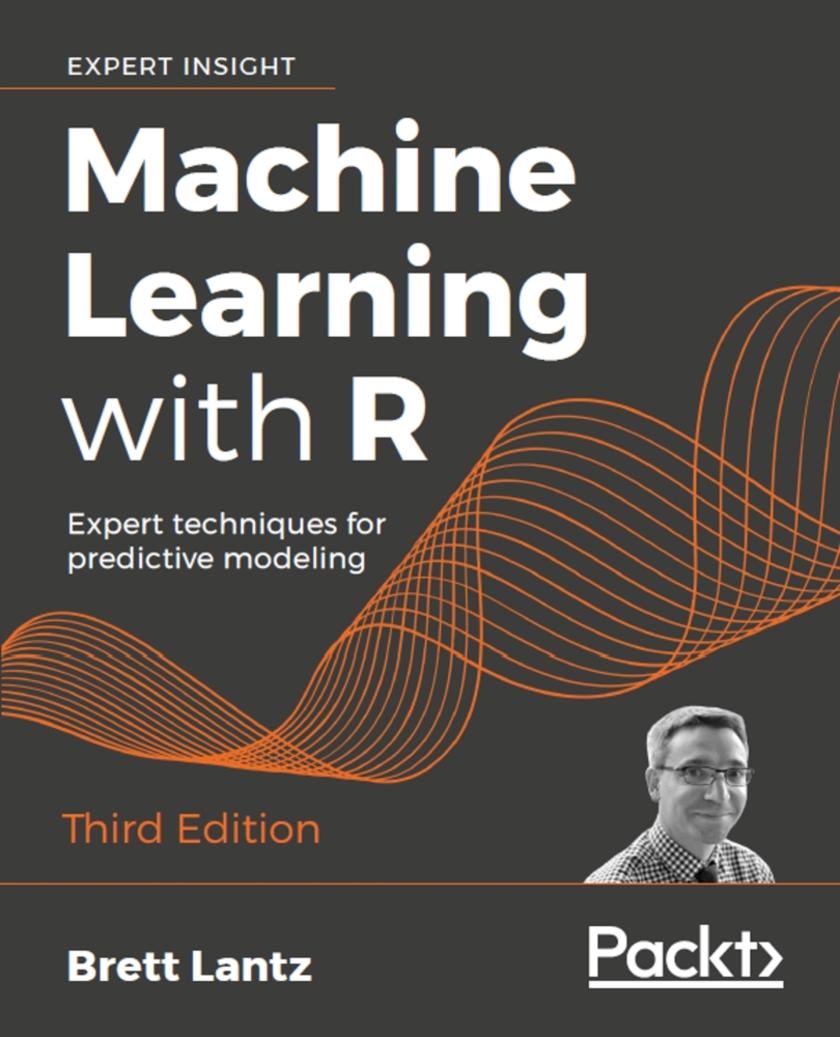
Machine Learning with R
¥73.02
Solve real-world data problems with R and machine learning Key Features * Third edition of the bestselling, widely acclaimed R machine learning book, updated and improved for R 3.5 and beyond * Harness the power of R to build flexible, effective, and transparent machine learning models * Learn quickly with a clear, hands-on guide by experienced machine learning teacher and practitioner, Brett Lantz Book Description Machine learning, at its core, is concerned with transforming data into actionable knowledge. R offers a powerful set of machine learning methods to quickly and easily gain insight from your data. Machine Learning with R, Third Edition provides a hands-on, readable guide to applying machine learning to real-world problems. Whether you are an experienced R user or new to the language, Brett Lantz teaches you everything you need to uncover key insights, make new predictions, and visualize your findings. This new 3rd edition updates the classic R data science book with newer and better libraries, advice on ethical and bias issues in machine learning, and an introduction to deep learning. Find powerful new insights in your data; discover machine learning with R. What you will learn * Discover the origins of machine learning and how exactly a computer learns by example * Prepare your data for machine learning work with the R programming language * Classify important outcomes using nearest neighbor and Bayesian methods * Predict future events using decision trees, rules, and support vector machines * Forecast numeric data and estimate financial values using regression methods * Model complex processes with artificial neural networks — the basis of deep learning * Avoid bias in machine learning models * Evaluate your models and improve their performance * Connect R to SQL databases and emerging big data technologies such as Spark, H2O, and TensorFlow Who this book is for Data scientists, students, and other practitioners who want a clear, accessible guide to machine learning with R.
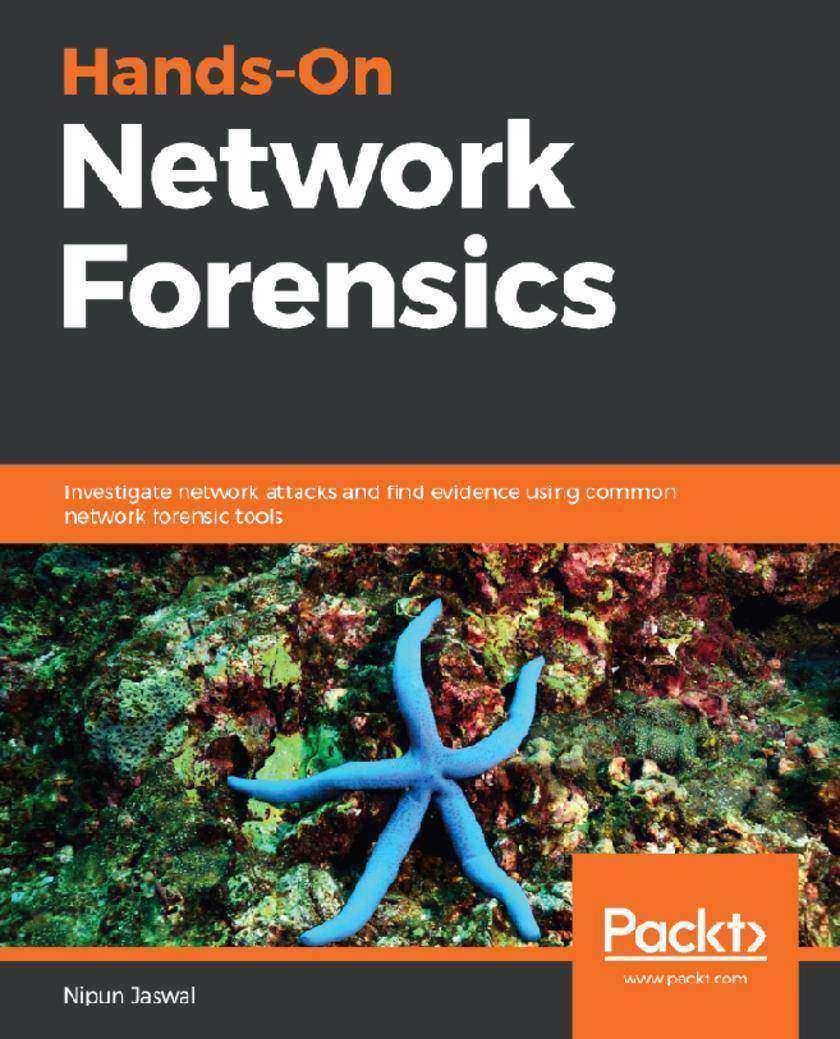
Hands-On Network Forensics
¥73.02
Gain basic skills in network forensics and learn how to apply them effectively Key Features * Investigate network threats with ease * Practice forensics tasks such as intrusion detection, network analysis, and scanning * Learn forensics investigation at the network level Book Description Network forensics is a subset of digital forensics that deals with network attacks and their investigation. In the era of network attacks and malware threat, it’s now more important than ever to have skills to investigate network attacks and vulnerabilities. Hands-On Network Forensics starts with the core concepts within network forensics, including coding, networking, forensics tools, and methodologies for forensic investigations. You’ll then explore the tools used for network forensics, followed by understanding how to apply those tools to a PCAP file and write the accompanying report. In addition to this, you will understand how statistical flow analysis, network enumeration, tunneling and encryption, and malware detection can be used to investigate your network. Towards the end of this book, you will discover how network correlation works and how to bring all the information from different types of network devices together. By the end of this book, you will have gained hands-on experience of performing forensics analysis tasks. What you will learn * Discover and interpret encrypted traffic * Learn about various protocols * Understand the malware language over wire * Gain insights into the most widely used malware * Correlate data collected from attacks * Develop tools and custom scripts for network forensics automation Who this book is for The book targets incident responders, network engineers, analysts, forensic engineers and network administrators who want to extend their knowledge from the surface to the deep levels of understanding the science behind network protocols, critical indicators in an incident and conducting a forensic search over the wire.
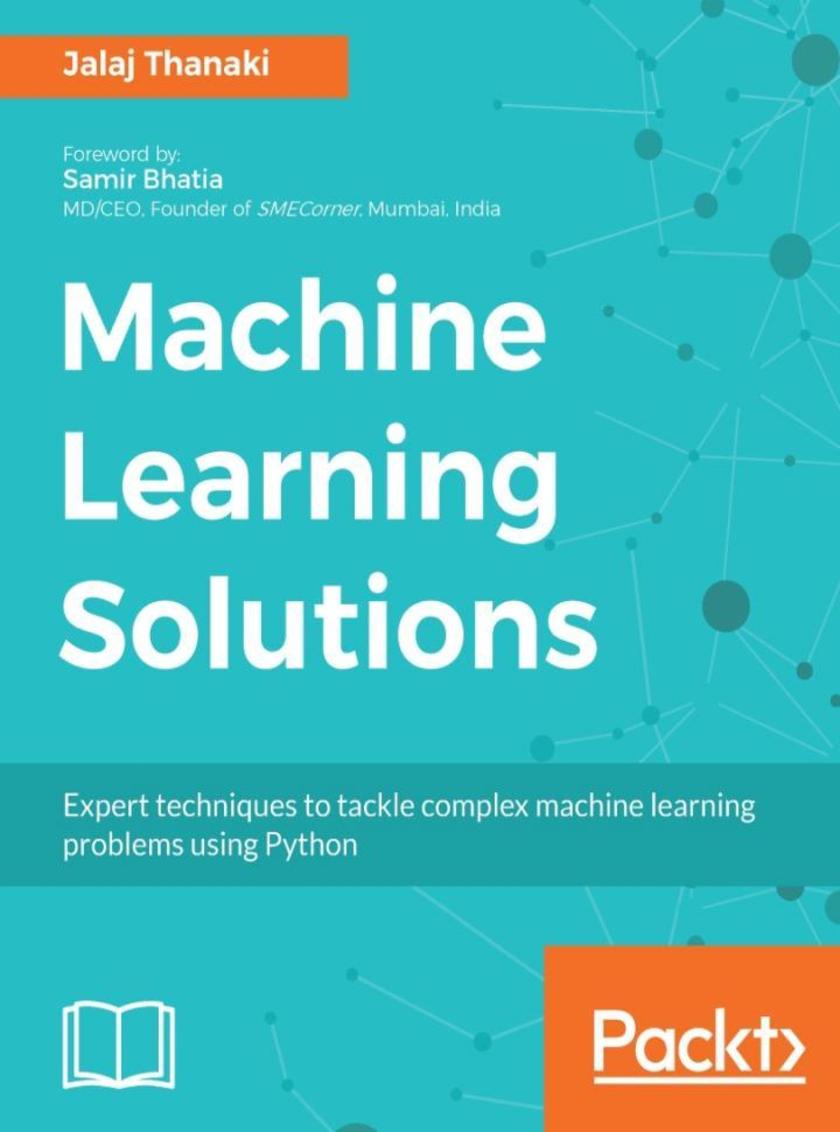
Machine Learning Solutions
¥73.02
Practical, hands-on solutions in Python to overcome any problem in Machine Learning About This Book ? Master the advanced concepts, methodologies, and use cases of machine learning ? Build ML applications for analytics, NLP and computer vision domains ? Solve the most common problems in building machine learning models Who This Book Is For This book is for the intermediate users such as machine learning engineers, data engineers, data scientists, and more, who want to solve simple to complex machine learning problems in their day-to-day work and build powerful and efficient machine learning models. A basic understanding of the machine learning concepts and some experience with Python programming is all you need to get started with this book. What You Will Learn ? Select the right algorithm to derive the best solution in ML domains ? Perform predictive analysis effciently using ML algorithms ? Predict stock prices using the stock index value ? Perform customer analytics for an e-commerce platform ? Build recommendation engines for various domains ? Build NLP applications for the health domain ? Build language generation applications using different NLP techniques ? Build computer vision applications such as facial emotion recognition In Detail Machine learning (ML) helps you find hidden insights from your data without the need for explicit programming. This book is your key to solving any kind of ML problem you might come across in your job. You’ll encounter a set of simple to complex problems while building ML models, and you'll not only resolve these problems, but you’ll also learn how to build projects based on each problem, with a practical approach and easy-to-follow examples. The book includes a wide range of applications: from analytics and NLP, to computer vision domains. Some of the applications you will be working on include stock price prediction, a recommendation engine, building a chat-bot, a facial expression recognition system, and many more. The problem examples we cover include identifying the right algorithm for your dataset and use cases, creating and labeling datasets, getting enough clean data to carry out processing, identifying outliers, overftting datasets, hyperparameter tuning, and more. Here, you'll also learn to make more timely and accurate predictions. In addition, you'll deal with more advanced use cases, such as building a gaming bot, building an extractive summarization tool for medical documents, and you'll also tackle the problems faced while building an ML model. By the end of this book, you'll be able to fine-tune your models as per your needs to deliver maximum productivity. Style and approach This book is a step-by-step guide on how to develop machine learning applications for various domains. Each chapter of this book contains the practical guide on how to build specific machine learning applications from its base-line approach to the best possible approach. Basic necessary concepts, conman mistakes for every approach and optimization techniques are discussed for each application.
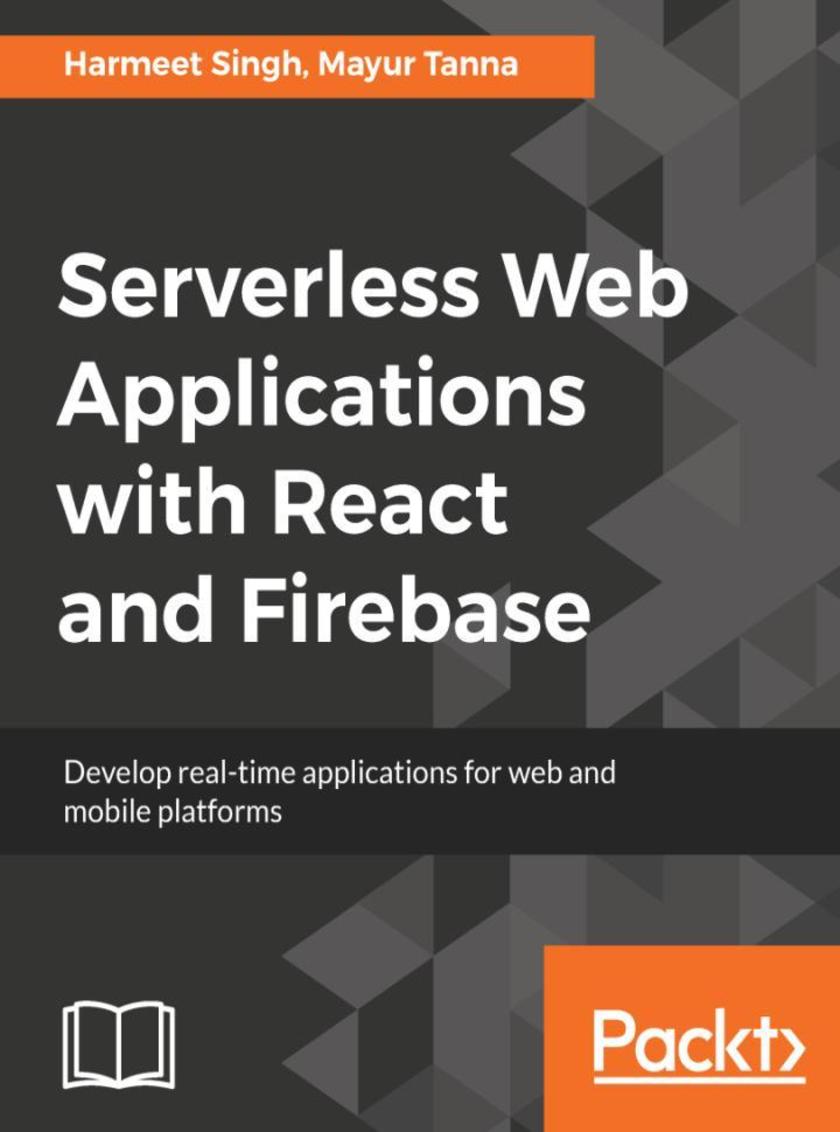
Serverless Web Applications with React and Firebase
¥73.02
Build rich and collaborative applications using client-side code with React, Redux, and Firebase About This Book ? A practical guide covering the full stack for web development with React 16 and Firebase ? Leverage the power of Firebase Cloud Storage, messaging, functions, OAuth, and database security to develop serverless web applications. ? Develop high-performance applications without the hassle of setting up complex web infrastructure. Who This Book Is For This book is for JavaScript developers who have some previous knowledge of React and want to develop serverless, full-stack applications but without the hassle of setting up a complex infrastructure. What You Will Learn ? Install powerful React.js and Firebase tools to make development much more efficient ? Create React components with Firebase to save and retrieve the data in real-time ? Use Firebase Authentication to make your React user interface secure ? Develop React and Firebase applications with Redux integration ? Firebase database security rules ? Firebase Cloud Storage Integration to upload and store data on the cloud ? Create a complete real-time application with React and firebase ? Using Firebase Cloud messaging and Cloud functions with React ? Firebase Cloud Storage integration with React In Detail ReactJS is a wonderful framework for UI development. Firebase as a backend with React is a great choice as it is easy, powerful, and provides great developer experience. It removes a lot of boilerplate code from your app and allows you to focus on your app to get it out quickly to users. Firebase with React is also a good choice for Most Viable Product (MVP) development. This book provides more practical insights rather than just theoretical concepts and includes basic to advanced examples – from hello world to a real-time seat booking app and Helpdesk application This book will cover the essentials of Firebase and React.js and will take you on a fast-paced journey through building real-time applications with Firebase features such as Cloud Storage, Cloud Function, Hosting and the Realtime Database. We will learn how to secure our application by using Firebase authentication and database security rules. We will leverage the power of Redux to organize data in the front-end, since Redux attempts to make state mutations predictable by imposing certain restrictions on how and when updates can happen. Towards the end of the book you will have improved your React skills by realizing the potential of Firebase to create real-time serverless web applications. Style and approach Practical insights rather than just theoretical concepts while including basic to advanced examples – from hello world to a real-time seat booking app and Helpdesk application.
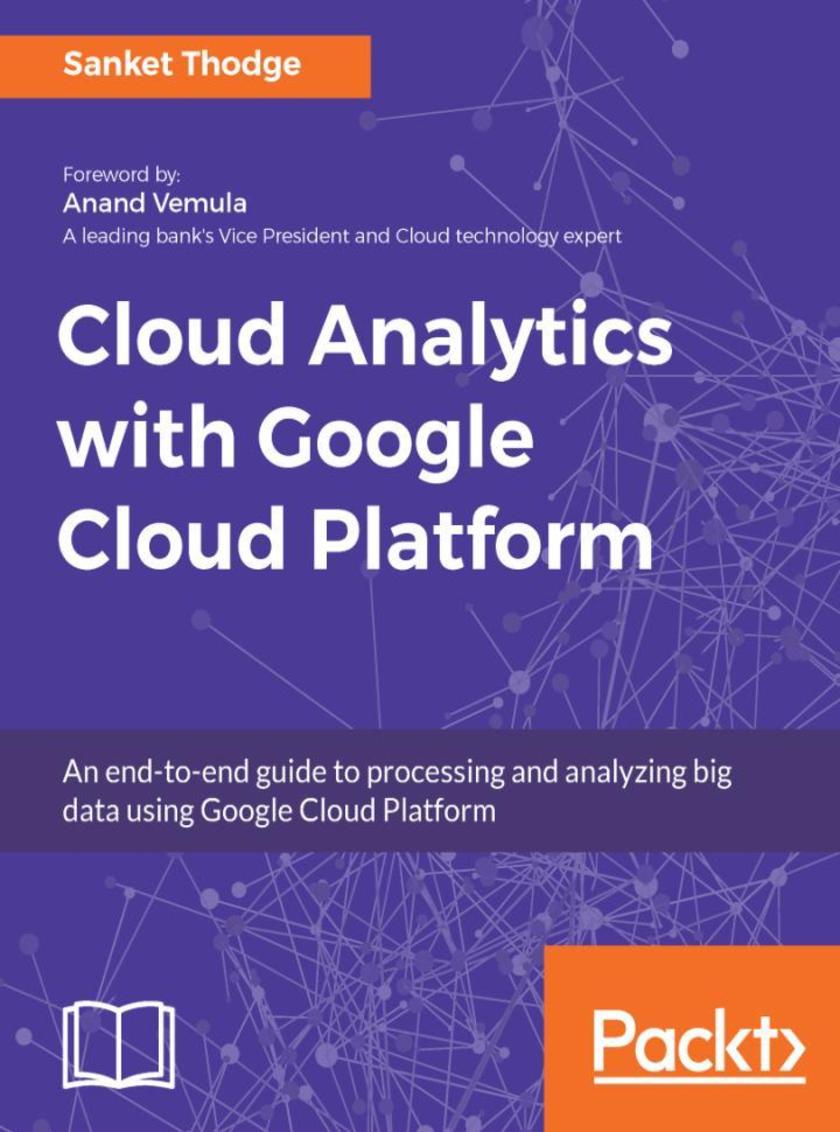
Cloud Analytics with Google Cloud Platform
¥73.02
Combine the power of analytics and cloud computing for faster and efficient insights About This Book ? Master the concept of analytics on the cloud: and how organizations are using it ? Learn the design considerations and while applying a cloud analytics solution ? Design an end-to-end analytics pipeline on the cloud Who This Book Is For This book is targeted at CIOs, CTOs, and even analytics professionals looking for various alternatives to implement their analytics pipeline on the cloud. Data professionals looking to get started with cloud-based analytics will also find this book useful. Some basic exposure to cloud platforms such as GCP will be helpful, but not mandatory. What You Will Learn ? Explore the basics of cloud analytics and the major cloud solutions ? Learn how organizations are using cloud analytics to improve the ROI ? Explore the design considerations while adopting cloud services ? Work with the ingestion and storage tools of GCP such as Cloud Pub/Sub ? Process your data with tools such as Cloud Dataproc, BigQuery, etc ? Over 70 GCP tools to build an analytics engine for cloud analytics ? Implement machine learning and other AI techniques on GCP In Detail With the ongoing data explosion, more and more organizations all over the world are slowly migrating their infrastructure to the cloud. These cloud platforms also provide their distinct analytics services to help you get faster insights from your data. This book will give you an introduction to the concept of analytics on the cloud, and the different cloud services popularly used for processing and analyzing data. If you’re planning to adopt the cloud analytics model for your business, this book will help you understand the design and business considerations to be kept in mind, and choose the best tools and alternatives for analytics, based on your requirements. The chapters in this book will take you through the 70+ services available in Google Cloud Platform and their implementation for practical purposes. From ingestion to processing your data, this book contains best practices on building an end-to-end analytics pipeline on the cloud by leveraging popular concepts such as machine learning and deep learning. By the end of this book, you will have a better understanding of cloud analytics as a concept as well as a practical know-how of its implementation Style and approach Comprehensive guide with a perfect blend of theory, examples, and implementation of real-world use-cases
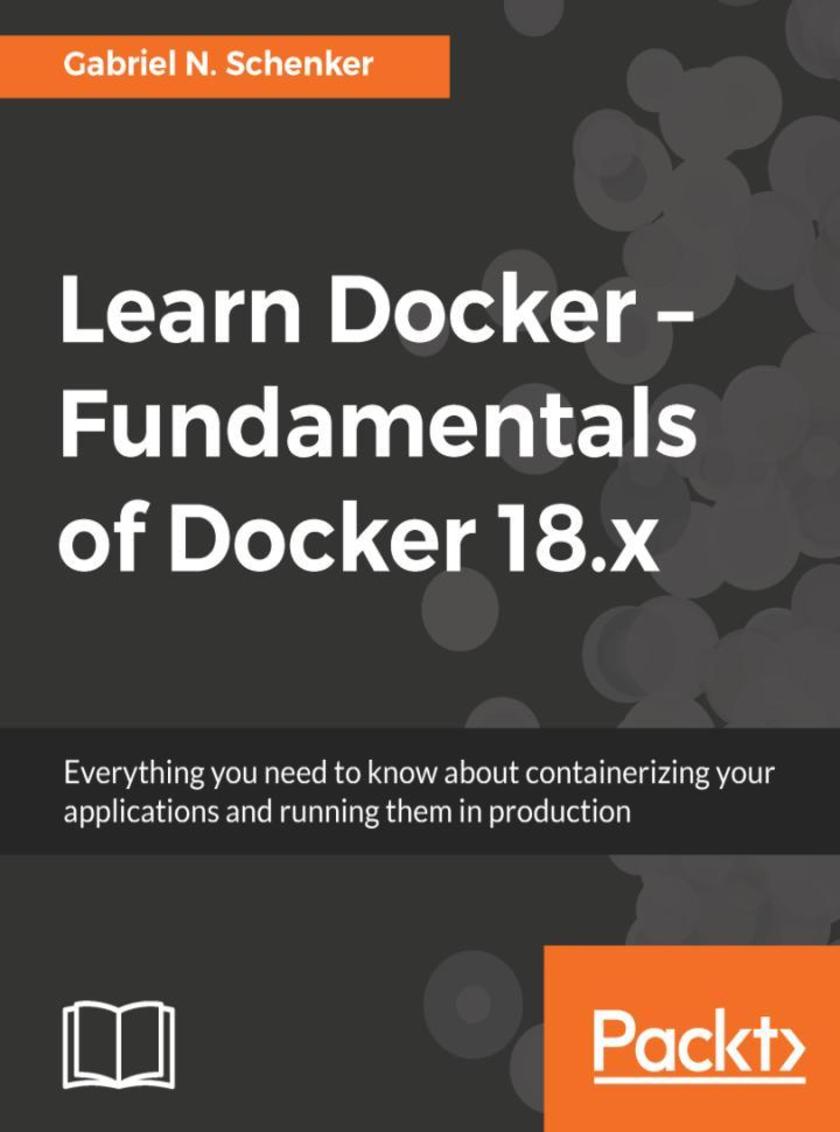
Learn Docker - Fundamentals of Docker 18.x
¥73.02
Enhance your software deployment workflow using containers About This Book ? Get up-and-running with basic to advanced concepts of Docker ? Get acquainted with concepts such as Docker containers, Docker images, orchestrators and so on. ? Practical test-based approach to learning a prominent containerization tool Who This Book Is For This book is targeted at system administrators, operations engineers, DevOps engineers, and developers or stakeholders who are interested in getting started with Docker from scratch. No prior experience with Docker Containers is required. What You Will Learn ? Containerize your traditional or microservice-based application ? Share or ship your application as an immutable container image ? Build a Docker swarm and a Kubernetes cluster in the cloud ? Run a highly distributed application using Docker Swarm or Kubernetes ? Update or rollback a distributed application with zero downtime ? Secure your applications via encapsulation, networks, and secrets ? Know your options when deploying your containerized app into the cloud In Detail Docker containers have revolutionized the software supply chain in small and big enterprises. Never before has a new technology so rapidly penetrated the top 500 enterprises worldwide. Companies that embrace containers and containerize their traditional mission-critical applications have reported savings of at least 50% in total maintenance cost and a reduction of 90% (or more) of the time required to deploy new versions of those applications. Furthermore they are benefitting from increased security just by using containers as opposed to running applications outside containers. This book starts from scratch, introducing you to Docker fundamentals and setting up an environment to work with it. Then we delve into concepts such as Docker containers, Docker images, Docker Compose, and so on. We will also cover the concepts of deployment, orchestration, networking, and security. Furthermore, we explain Docker functionalities on public clouds such as AWS. By the end of this book, you will have hands-on experience working with Docker containers and orchestrators such as SwarmKit and Kubernetes. Style and approach The simple end-to-end guide will help you learn everything about how to containerize, ship, and run both a traditional application and a modern microservice-based application on-premise or in the cloud.
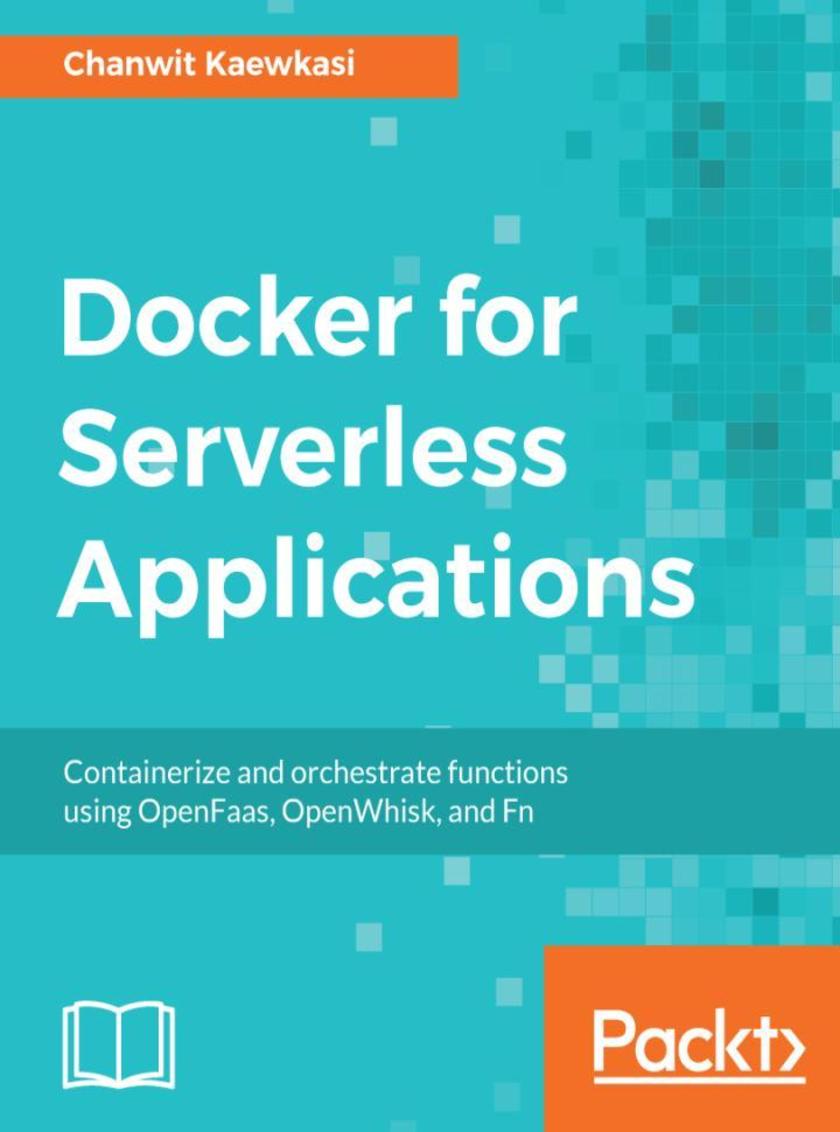
Docker for Serverless Applications
¥73.02
Build applications and infrastructures that leverage Function-as-a-Service and Docker About This Book ? Implement containerization in Serverless/FaaS environments ? Utilize Docker as a functional unit of work for Serverless/FaaS platforms ? Use Docker as a portable infrastructure for Serverless Applications Who This Book Is For If you are a Developer, a Docker Engineer, a DevOps Engineer, or any stakeholder interested in learning the use of Docker on Serverless environments then this book is for you. What You Will Learn ? Learn what Serverless and FaaS applications are ? Get acquainted with the architectures of three major serverless systems ? Explore how Docker technologies can help develop Serverless applications ? Create and maintain FaaS infrastructures ? Set up Docker infrastructures to serve as on-premises FaaS infrastructures ? Define functions for Serverless applications with Docker containers In Detail Serverless applications have gained a lot of popularity among developers and are currently the buzzwords in the tech market. Docker and serverless are two terms that go hand-in-hand. This book will start by explaining serverless and Function-as-a-Service (FaaS) concepts, and why they are important. Then, it will introduce the concepts of containerization and how Docker fits into the Serverless ideology. It will explore the architectures and components of three major Docker-based FaaS platforms, how to deploy and how to use their CLI. Then, this book will discuss how to set up and operate a production-grade Docker cluster. We will cover all concepts of FaaS frameworks with practical use cases, followed by deploying and orchestrating these serverless systems using Docker. Finally, we will also explore advanced topics and prototypes for FaaS architectures in the last chapter. By the end of this book, you will be in a position to build and deploy your own FaaS platform using Docker. Style and approach A practical guide that offers a simple way to easily understand Serverless Applications utilizing Docker as the development environment.
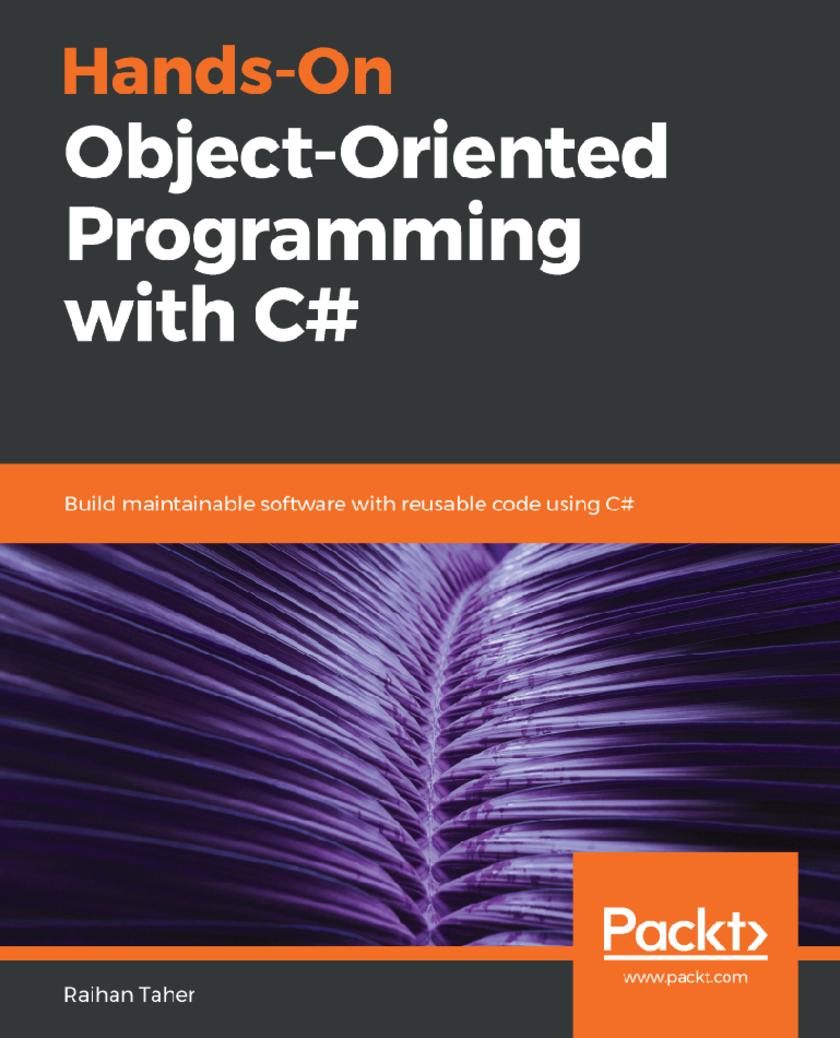
Hands-On Object-Oriented Programming with C#
¥73.02
Enhance your programming skills by learning the intricacies of object oriented programming in C# 8 Key Features * Understand the four pillars of OOP; encapsulation, inheritance, abstraction and polymorphism * Leverage the latest features of C# 8 including nullable reference types and Async Streams * Explore various design patterns, principles, and best practices in OOP Book Description Object-oriented programming (OOP) is a programming paradigm organized around objects rather than actions, and data rather than logic. With the latest release of C#, you can look forward to new additions that improve object-oriented programming. This book will get you up to speed with OOP in C# in an engaging and interactive way. The book starts off by introducing you to C# language essentials and explaining OOP concepts through simple programs. You will then go on to learn how to use classes, interfacesm and properties to write pure OOP code in your applications. You will broaden your understanding of OOP further as you delve into some of the advanced features of the language, such as using events, delegates, and generics. Next, you will learn the secrets of writing good code by following design patterns and design principles. You'll also understand problem statements with their solutions and learn how to work with databases with the help of ADO.NET. Further on, you'll discover a chapter dedicated to the Git version control system. As you approach the conclusion, you'll be able to work through OOP-specific interview questions and understand how to tackle them. By the end of this book, you will have a good understanding of OOP with C# and be able to take your skills to the next level. What you will learn * Master OOP paradigm fundamentals * Explore various types of exceptions * Utilize C# language constructs efficiently * Solve complex design problems by understanding OOP * Understand how to work with databases using ADO.NET * Understand the power of generics in C# * Get insights into the popular version control system, Git * Learn how to model and design your software Who this book is for This book is designed for people who are new to object-oriented programming. Basic C# skills are assumed, however, prior knowledge of OOP in any other language is not required.
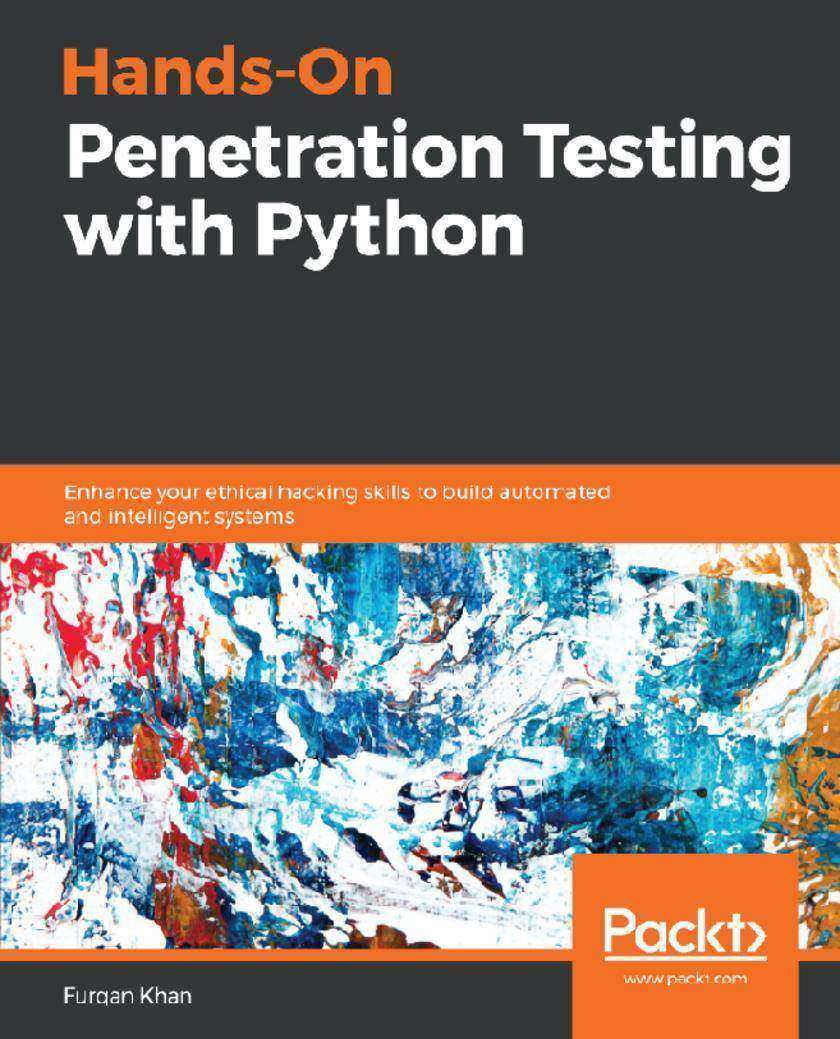
Hands-On Penetration Testing with Python
¥73.02
Implement defensive techniques in your ecosystem successfully with Python Key Features * Identify and expose vulnerabilities in your infrastructure with Python * Learn custom exploit development . * Make robust and powerful cybersecurity tools with Python Book Description With the current technological and infrastructural shift, penetration testing is no longer a process-oriented activity. Modern-day penetration testing demands lots of automation and innovation; the only language that dominates all its peers is Python. Given the huge number of tools written in Python, and its popularity in the penetration testing space, this language has always been the first choice for penetration testers. Hands-On Penetration Testing with Python walks you through advanced Python programming constructs. Once you are familiar with the core concepts, you’ll explore the advanced uses of Python in the domain of penetration testing and optimization. You’ll then move on to understanding how Python, data science, and the cybersecurity ecosystem communicate with one another. In the concluding chapters, you’ll study exploit development, reverse engineering, and cybersecurity use cases that can be automated with Python. By the end of this book, you’ll have acquired adequate skills to leverage Python as a helpful tool to pentest and secure infrastructure, while also creating your own custom exploits. What you will learn * Get to grips with Custom vulnerability scanner development * Familiarize yourself with web application scanning automation and exploit development * Walk through day-to-day cybersecurity scenarios that can be automated with Python * Discover enterprise-or organization-specific use cases and threat-hunting automation * Understand reverse engineering, fuzzing, buffer overflows , key-logger development, and exploit development for buffer overflows. * Understand web scraping in Python and use it for processing web responses * Explore Security Operations Centre (SOC) use cases * Get to understand Data Science, Python, and cybersecurity all under one hood Who this book is for If you are a security consultant , developer or a cyber security enthusiast with little or no knowledge of Python and want in-depth insight into how the pen-testing ecosystem and python combine to create offensive tools , exploits , automate cyber security use-cases and much more then this book is for you. Hands-On Penetration Testing with Python guides you through the advanced uses of Python for cybersecurity and pen-testing, helping you to better understand security loopholes within your infrastructure .
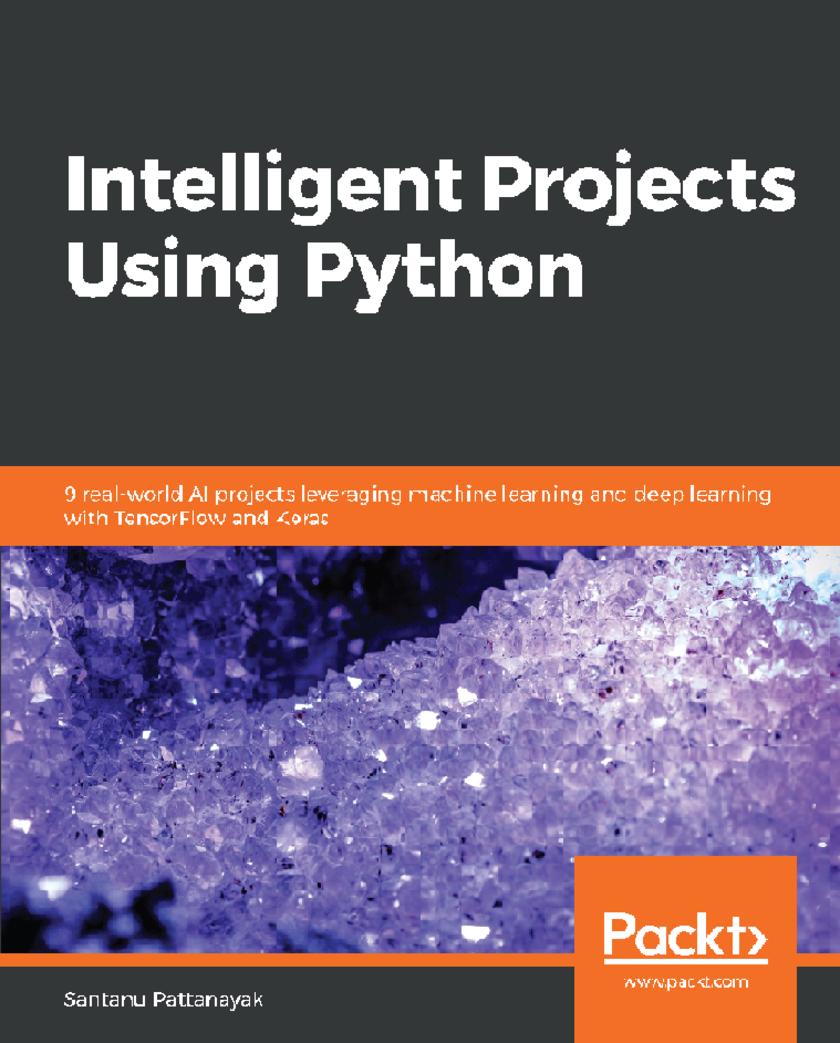
Intelligent Projects Using Python
¥73.02
Implement machine learning and deep learning methodologies to build smart, cognitive AI projects using Python Key Features * A go-to guide to help you master AI algorithms and concepts * 8 real-world projects tackling different challenges in healthcare, e-commerce, and surveillance * Use TensorFlow, Keras, and other Python libraries to implement smart AI applications Book Description This book will be a perfect companion if you want to build insightful projects from leading AI domains using Python. The book covers detailed implementation of projects from all the core disciplines of AI. We start by covering the basics of how to create smart systems using machine learning and deep learning techniques. You will assimilate various neural network architectures such as CNN, RNN, LSTM, to solve critical new world challenges. You will learn to train a model to detect diabetic retinopathy conditions in the human eye and create an intelligent system for performing a video-to-text translation. You will use the transfer learning technique in the healthcare domain and implement style transfer using GANs. Later you will learn to build AI-based recommendation systems, a mobile app for sentiment analysis and a powerful chatbot for carrying customer services. You will implement AI techniques in the cybersecurity domain to generate Captchas. Later you will train and build autonomous vehicles to self-drive using reinforcement learning. You will be using libraries from the Python ecosystem such as TensorFlow, Keras and more to bring the core aspects of machine learning, deep learning, and AI. By the end of this book, you will be skilled to build your own smart models for tackling any kind of AI problems without any hassle. What you will learn * Build an intelligent machine translation system using seq-2-seq neural translation machines * Create AI applications using GAN and deploy smart mobile apps using TensorFlow * Translate videos into text using CNN and RNN * Implement smart AI Chatbots, and integrate and extend them in several domains * Create smart reinforcement, learning-based applications using Q-Learning * Break and generate CAPTCHA using Deep Learning and Adversarial Learning Who this book is for This book is intended for data scientists, machine learning professionals, and deep learning practitioners who are ready to extend their knowledge and potential in AI. If you want to build real-life smart systems to play a crucial role in every complex domain, then this book is what you need. Knowledge of Python programming and a familiarity with basic machine learning and deep learning concepts are expected to help you get the most out of the book
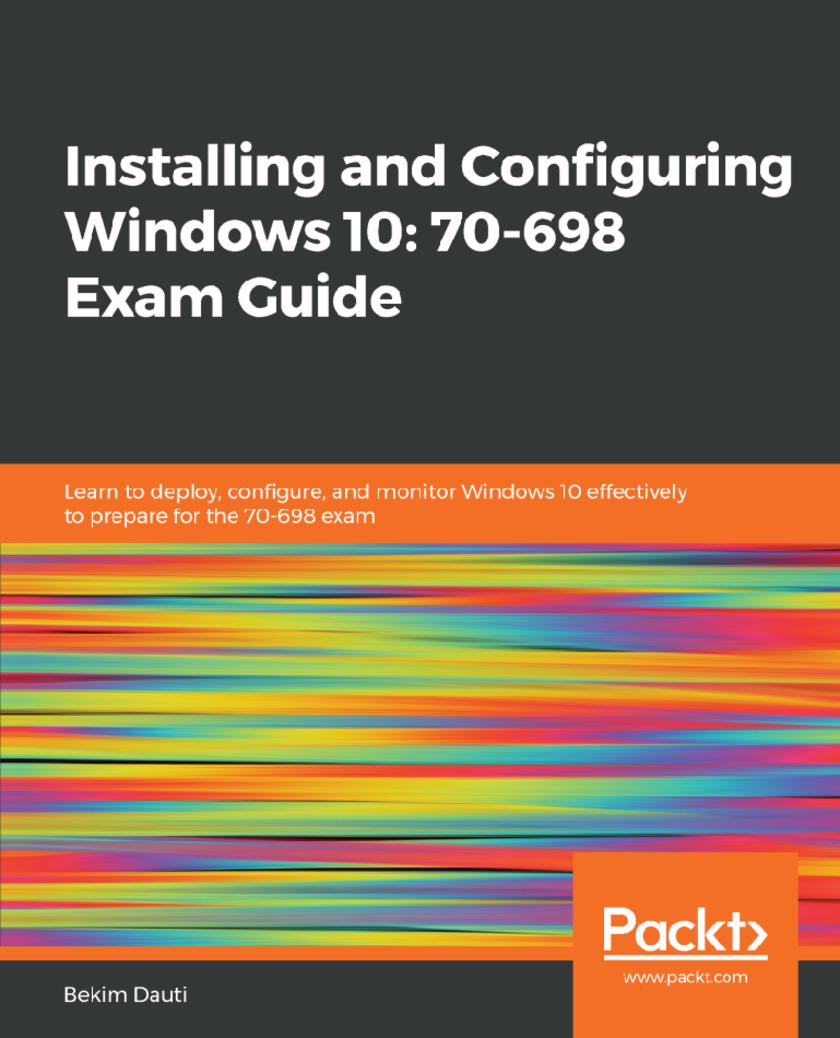
Installing and Configuring Windows 10: 70-698 Exam Guide
¥73.02
Get ready for the Windows 10: 70-698 exam and configure Windows to manage data recovery Key Features * Implement Windows 10 operational and administrative tasks * Configure devices, remote management settings, advanced management tools, and device drivers * Comprehensive guide to help you work efficiently in Windows 10 Book Description The Installing and Configuring Windows 10: 70-698 Exam Guide is designed to confirm what you already know, while also updating your knowledge of Windows 10. With its easy-to-follow guidance, you will quickly learn the user interface and discover steps to work efficiently in Windows 10 to rule out delays and obstacles. This book begins by covering various ways of installing Windows 10, followed by instructions on post-installation tasks. You will learn about the deployment of Windows 10 in Enterprise and also see how to configure networking in Windows 10. You’ll understand how to leverage Disk Management and Windows PowerShell to configure disks, volumes, and file system options. As you progress through the chapters, you will be able to set up remote management in Windows 10 and learn more about Windows update usage, behavior, and settings. You will also gain insights that will help you monitor and manage data recovery and explore how to configure authentication, authorization, and advanced management tools in Windows 10. By the end of this book, you will be equipped with enough knowledge to take the 70-698 exam and explore different study methods to improve your chances of passing the exam with ease. What you will learn * Discover various ways of installing Windows 10 * Understand how to configure devices and device drivers * Configure and support IPv4 and IPv6 network settings * Troubleshoot storage and removable device issues * Get to grips with data access and usage * Explore the advanced management tools available in Windows 10 Who this book is for This book is for IT professionals who perform installation, configuration, general local management and maintenance of Windows 10 core services and are preparing to clear the Windows 10: 70-698 exam
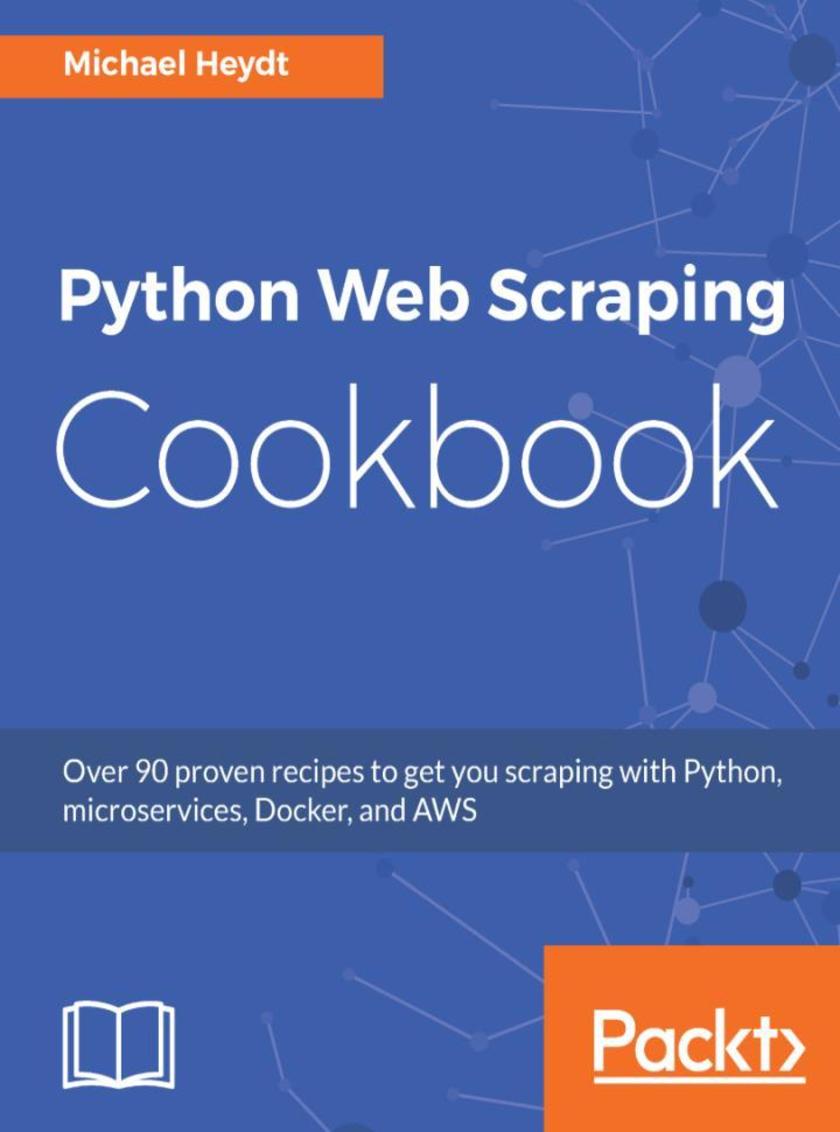
Python Web Scraping Cookbook
¥73.02
Untangle your web scraping complexities and access web data with ease using Python *s About This Book ? Hands-on recipes for advancing your web scraping skills to expert level. ? One-Stop Solution Guide to address complex and challenging web scraping tasks using Python. ? Understand the web page structure and collect meaningful data from the website with ease Who This Book Is For This book is ideal for Python programmers, web administrators, security professionals or someone who wants to perform web analytics would find this book relevant and useful. Familiarity with Python and basic understanding of web scraping would be useful to take full advantage of this book. What You Will Learn ? Use a wide variety of tools to scrape any website and data—including BeautifulSoup, Scrapy, Selenium, and many more ? Master expression languages such as XPath, CSS, and regular expressions to extract web data ? Deal with scraping traps such as hidden form fields, throttling, pagination, and different status codes ? Build robust scraping pipelines with SQS and RabbitMQ ? Scrape assets such as images media and know what to do when Scraper fails to run ? Explore ETL techniques of build a customized crawler, parser, and convert structured and unstructured data from websites ? Deploy and run your scraper-as-aservice in AWS Elastic Container Service In Detail Python Web Scraping Cookbook is a solution-focused book that will teach you techniques to develop high-performance scrapers and deal with crawlers, sitemaps, forms automation, Ajax-based sites, caches, and more.You'll explore a number of real-world scenarios where every part of the development/product life cycle will be fully covered. You will not only develop the skills to design and develop reliable, performance data flows, but also deploy your codebase to an AWS. If you are involved in software engineering, product development, or data mining (or are interested in building data-driven products), you will find this book useful as each recipe has a clear purpose and objective. Right from extracting data from the websites to writing a sophisticated web crawler, the book's independent recipes will be a godsend on the job. This book covers Python libraries, requests, and BeautifulSoup. You will learn about crawling, web spidering, working with AJAX websites, paginated items, and more. You will also learn to tackle problems such as 403 errors, working with proxy, scraping images, LXML, and more. By the end of this book, you will be able to scrape websites more efficiently and to be able to deploy and operate your scraper in the cloud. Style and approach This book is a rich collection of recipes that will come in handy when you are scraping a website using Python. Addressing your common and not-so-common pain points while scraping website, this is a book that you must have on the shelf.
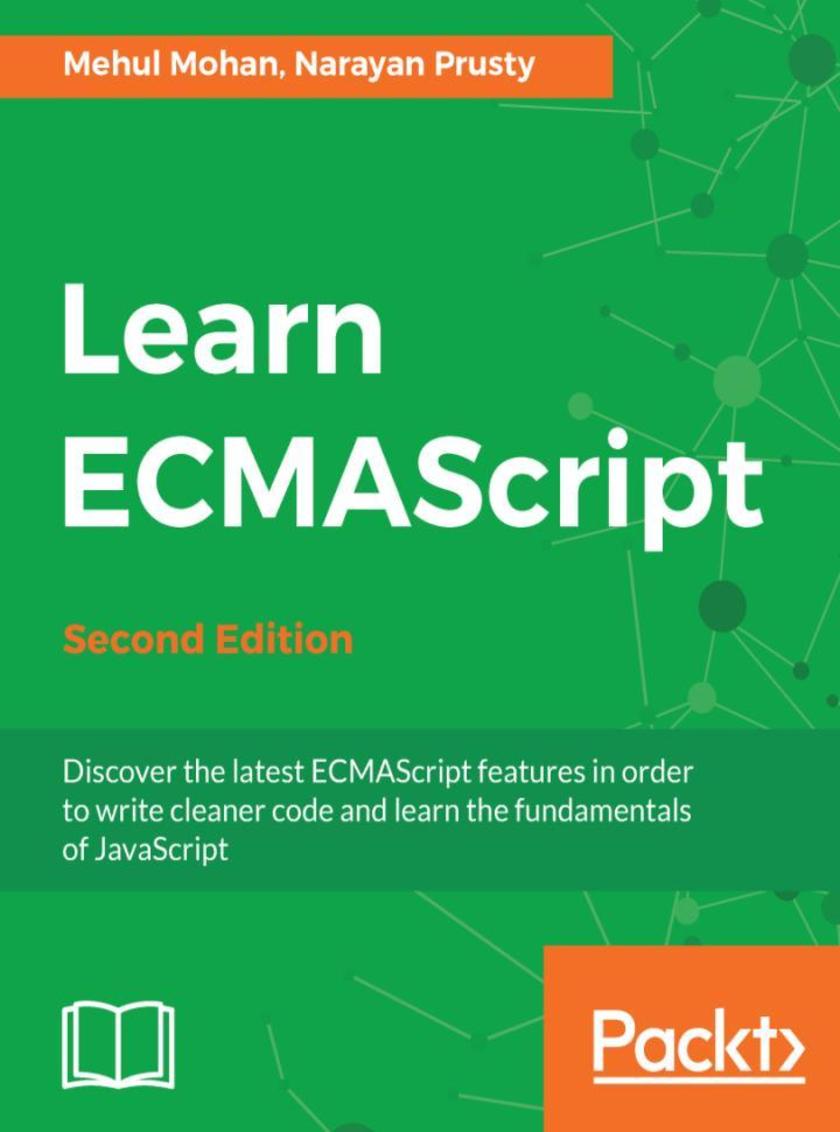
Learn ECMAScript - Second Edition
¥73.02
Get up and running with all the new features of ECMAScript and explore new ways of coding with JavaScript. About This Book ? Grasp the latest features of ECMAScript and the best way to use it in production code ? Learn newly added native APIs to JS Engine and perform tasks efficiently with a cleaner code base ? Understand the more complex sides of JavaScript such as the inheritance model, low-level memory management, multithreaded environments, and web workers Who This Book Is For This book is for web developers who have some basic programming knowledge and want to learn to write cleaner code with the power of ECMAScript. What You Will Learn ? Implement methods associated with objects as per the latest ECMAScript specification ? Make use of the latest features of ECMAScript ? Make use of many new APIs in HTML5 and modern JavaScript implementation ? Use SharedArrayBuffers for superfast concurrent and parallel programming ? Perform asynchronous programming with JavaScript ? Implement the best ways and practices to perform modular programming in JavaScript In Detail Learn ECMAScript explores implementation of the latest ECMAScript features to add to your developer toolbox, helping you to progress to an advanced level. Learn to add 1 to a variable andsafely access shared memory data within multiple threads to avoid race conditions. You’ll start the book by building on your existing knowledge of JavaScript, covering performing arithmetic operations, using arrow functions and dealing with closures. Next, you will grasp the most commonly used ECMAScript skills such as reflection, proxies, and classes. Furthermore, you’ll learn modularizing the JS code base, implementing JS on the web and how the modern HTML5 + JS APIs provide power to developers on the web. Finally, you will learn the deeper parts of the language, which include making JavaScript multithreaded with dedicated and shared web workers, memory management, shared memory, and atomics. It doesn’t end here; this book is 100% compatible with ES.Next. By the end of this book, you'll have fully mastered all the features of ECMAScript! Style and approach The level goes gradually from basic to advanced so that the reader can adapt at every point and level up their skills at the same time. The chapters are carefully arranged in a manner that makes every concept easy to learn and deploy right away in your code.
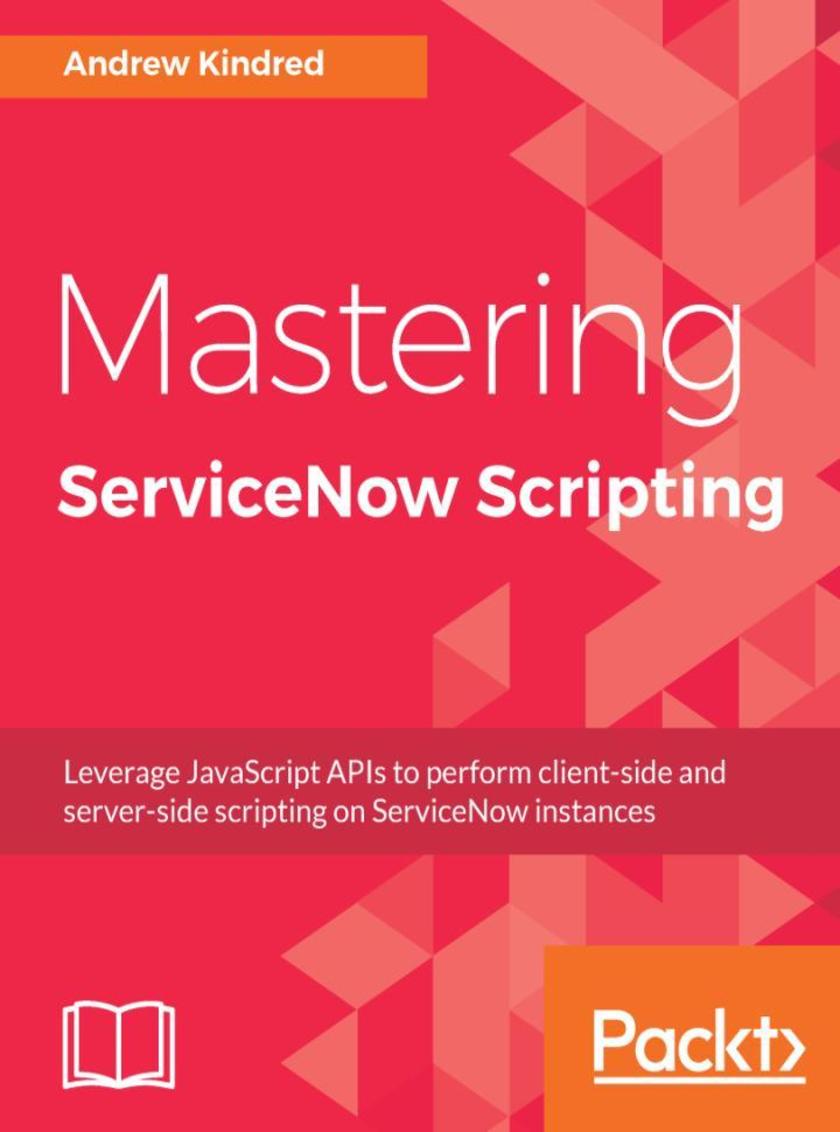
Mastering ServiceNow Scripting
¥73.02
Understand the ServiceNow *ing and build an efficient customized ServiceNow instance About This Book ? Customize your ServiceNow instance according to your organization’s needs ? Learn to work with inbuilt JavaScript APIs in ServiceNow ? Take your ServiceNow experience to the next level by learning to * Who This Book Is For This book is targeted toward ServiceNow administrators or anyone willing to learn inbuilt JavaScript APIs used to * and customize ServiceNow instances. Prior experience with ServiceNow is required. What You Will Learn ? Customize your ServiceNow instance according to your organization's needs ? Explore the ServiceNow-exposed JavaScript APIs and libraries ? Discover the method for using ServiceNow *ing functions ? Take your ServiceNow experience to the next level by understanding advanced *ing ? Learn to build, test, and debug custom applications ? Use your customized instance efficiently with the help of best practices In Detail Industry giants like RedHat and NetApp have adopted ServiceNow for their operational needs, and it is evolving as the number one platform choice for IT Service management. ServiceNow provides their clients with an add-on when it comes to baseline instances, where *ing can be used to customize and improve the performance of instances. It also provides inbuilt JavaScript API for *ing and improving your JavaScript instance. This book will initially cover the basics of ServiceNow *ing and the appropriate time to * in a ServiceNow environment. Then, we dig deeper into client-side and server-side *ing using JavaScipt API. We will also cover advance concepts like on-demand functions, * actions, and best practices. Mastering ServiceNow Scripting acts as an end-to-end guide for writing, testing, and debugging *s of ServiceNow. We cover update sets for moving customizations between ServiceNow instances, jelly *s for making custom pages, and best practices for all types of * in ServiceNow. By the end of this book, you will have hands-on experience in *ing ServiceNow using inbuilt JavaScript API. Style and approach The book will take a practical approach delving into different aspects of ServiceNow *ing to help you become a *ing master.
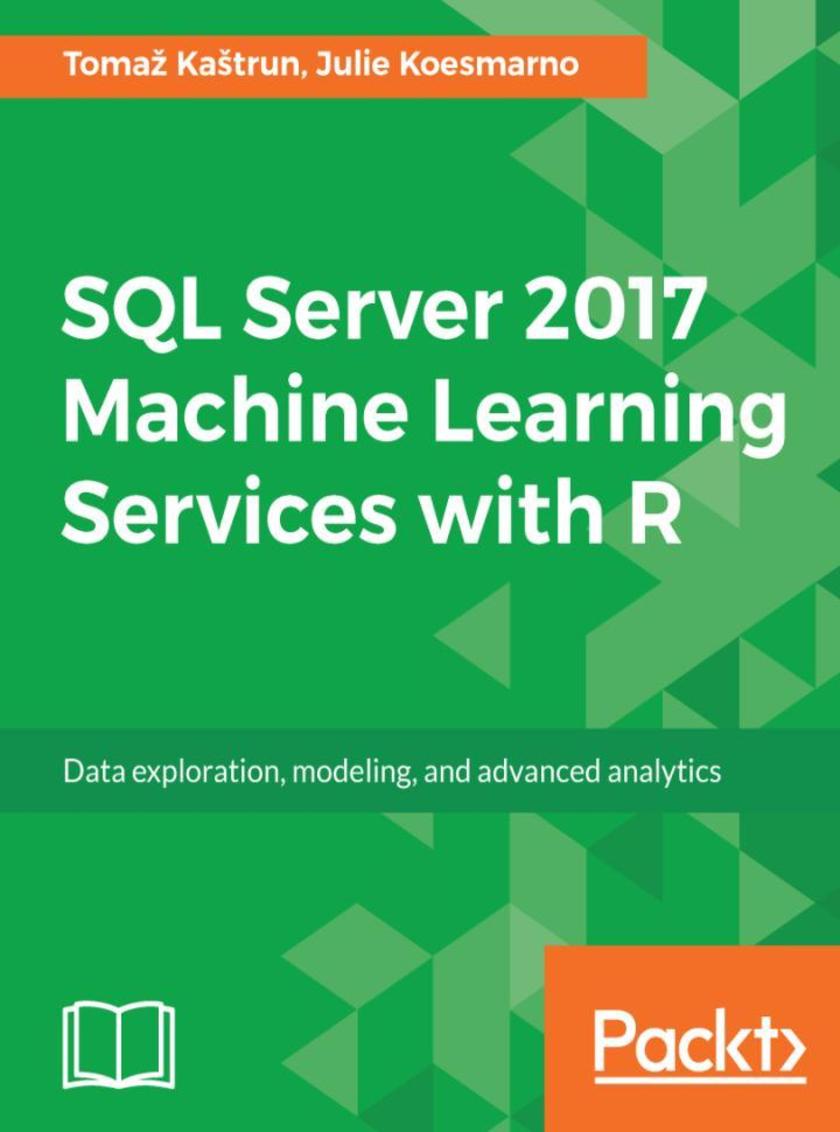
SQL Server 2017 Machine Learning Services with R
¥73.02
Develop and run efficient R *s and predictive models for SQL Server 2017 About This Book ? Learn how you can combine the power of R and SQL Server 2017 to build efficient, cost-effective data science solutions ? Leverage the capabilities of R Services to perform advanced analytics—from data exploration to predictive modeling ? A quick primer with practical examples to help you get up- and- running with SQL Server 2017 Machine Learning Services with R, as part of database solutions with continuous integration / continuous delivery. Who This Book Is For This book is for data analysts, data scientists, and database administrators with some or no experience in R but who are eager to easily deliver practical data science solutions in their day-to-day work (or future projects) using SQL Server. What You Will Learn ? Get an overview of SQL Server 2017 Machine Learning Services with R ? Manage SQL Server Machine Learning Services from installation to configuration and maintenance ? Handle and operationalize R code ? Explore RevoScaleR R algorithms and create predictive models ? Deploy, manage, and monitor database solutions with R ? Extend R with SQL Server 2017 features ? Explore the power of R for database administrators In Detail R Services was one of the most anticipated features in SQL Server 2016, improved significantly and rebranded as SQL Server 2017 Machine Learning Services. Prior to SQL Server 2016, many developers and data scientists were already using R to connect to SQL Server in siloed environments that left a lot to be desired, in order to do additional data analysis, superseding SSAS Data Mining or additional CLR programming functions. With R integrated within SQL Server 2017, these developers and data scientists can now benefit from its integrated, effective, efficient, and more streamlined analytics environment. This book gives you foundational knowledge and insights to help you understand SQL Server 2017 Machine Learning Services with R. First and foremost, the book provides practical examples on how to implement, use, and understand SQL Server and R integration in corporate environments, and also provides explanations and underlying motivations. It covers installing Machine Learning Services;maintaining, deploying, and managing code;and monitoring your services. Delving more deeply into predictive modeling and the RevoScaleR package, this book also provides insights into operationalizing code and exploring and visualizing data. To complete the journey, this book covers the new features in SQL Server 2017 and how they are compatible with R, amplifying their combined power. Style and approach This fast-paced guide will help data scientists and DBAs implement all new data science projects using SQL Server 2017 Machine Learning Services.
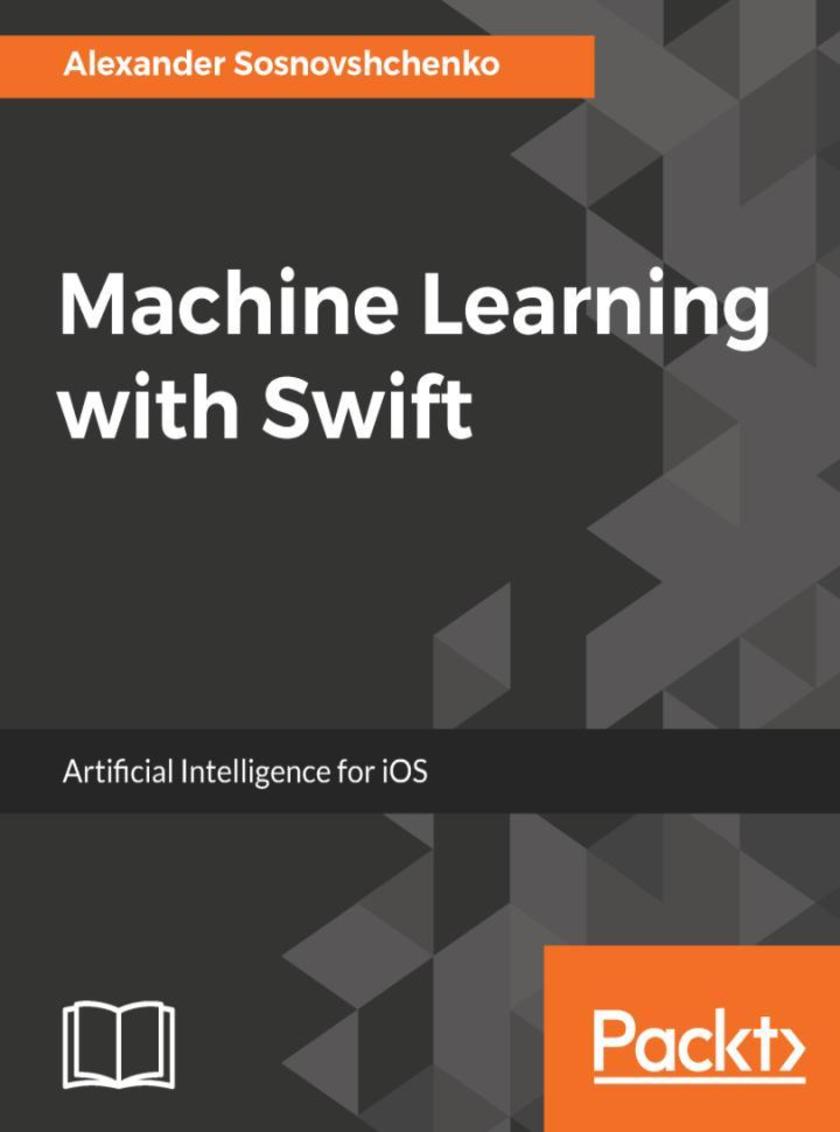
Machine Learning with Swift
¥73.02
Leverage the power of machine learning and Swift programming to build intelligent iOS applications with ease About This Book ? Implement effective machine learning solutions for your iOS applications ? Use Swift and Core ML to build and deploy popular machine learning models ? Develop neural networks for natural language processing and computer vision Who This Book Is For iOS developers who wish to create smarter iOS applications using the power of machine learning will find this book to be useful. This book will also benefit data science professionals who are interested in performing machine learning on mobile devices. Familiarity with Swift programming is all you need to get started with this book. What You Will Learn ? Learn rapid model prototyping with Python and Swift ? Deploy pre-trained models to iOS using Core ML ? Find hidden patterns in the data using unsupervised learning ? Get a deeper understanding of the clustering techniques ? Learn modern compact architectures of neural networks for iOS devices ? Train neural networks for image processing and natural language processing In Detail Machine learning as a field promises to bring increased intelligence to the software by helping us learn and analyse information efficiently and discover certain patterns that humans cannot. This book will be your guide as you embark on an exciting journey in machine learning using the popular Swift language. We’ll start with machine learning basics in the first part of the book to develop a lasting intuition about fundamental machine learning concepts. We explore various supervised and unsupervised statistical learning techniques and how to implement them in Swift, while the third section walks you through deep learning techniques with the help of typical real-world cases. In the last section, we will dive into some hard core topics such as model compression, GPU acceleration and provide some recommendations to avoid common mistakes during machine learning application development. By the end of the book, you'll be able to develop intelligent applications written in Swift that can learn for themselves. Style and approach A comprehensive guide that teaches how to implement machine learning apps for iOS from scratch
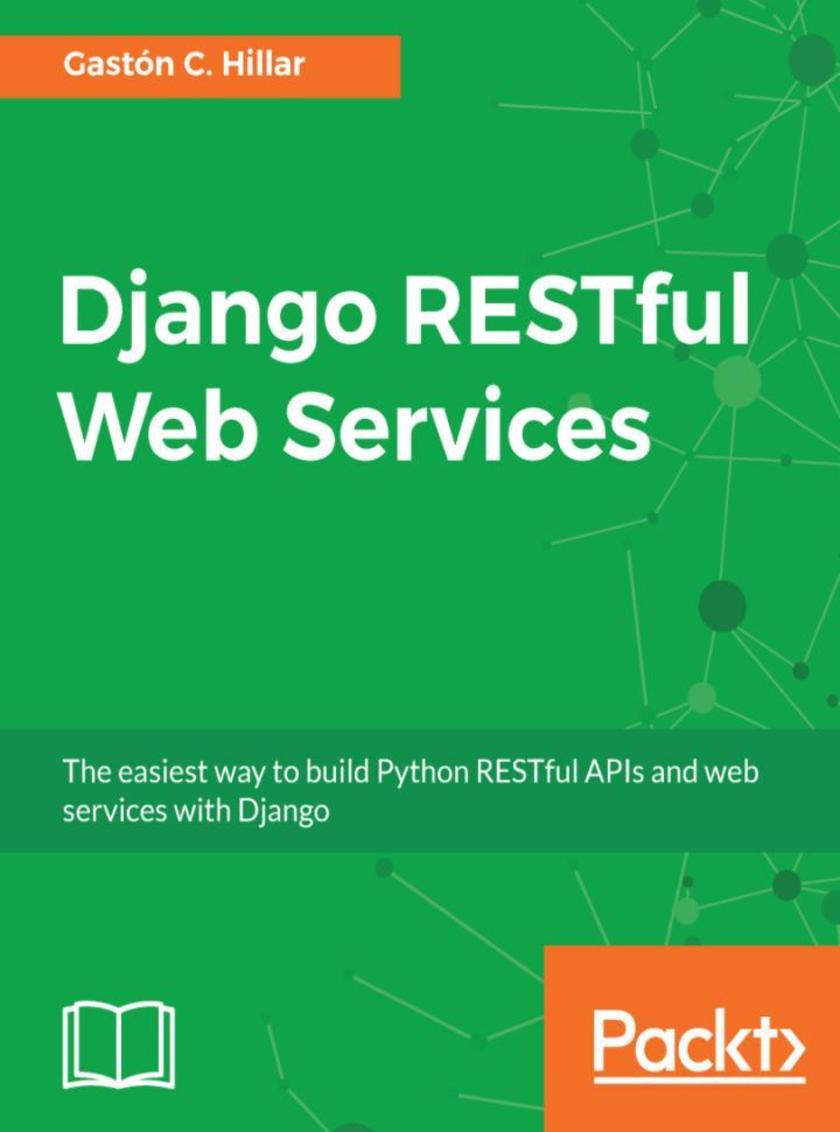
Django RESTful Web Services
¥73.02
Design, build and test RESTful web services with the Django framework and Python About This Book ? Create efficient real-world RESTful web services with the latest Django framework ? Authenticate, secure, and integrate third-party packages efficiently in your Web Services ? Leverage the power of Python for faster Web Service development Who This Book Is For This book is for Python developers who want to create RESTful web services with Django; you need to have a basic working knowledge of Django but no previous experience with RESTful web services is required. What You Will Learn ? The best way to build a RESTful Web Service or API with Django and the Django REST Framework ? Develop complex RESTful APIs from scratch with Django and the Django REST Framework ? Work with either SQL or NoSQL data sources ? Design RESTful Web Services based on application requirements ? Use third-party packages and extensions to perform common tasks ? Create automated tests for RESTful web services ? Debug, test, and profile RESTful web services with Django and the Django REST Framework In Detail Django is a Python web framework that makes the web development process very easy. It reduces the amount of trivial code, which simplifies the creation of web applications and results in faster development. It is very powerful and a great choice for creating RESTful web services. If you are a Python developer and want to efficiently create RESTful web services with Django for your apps, then this is the right book for you. The book starts off by showing you how to install and configure the environment, required software, and tools to create RESTful web services with Django and the Django REST framework. We then move on to working with advanced serialization and migrations to interact with SQLite and non-SQL data sources. We will use the features included in the Django REST framework to improve our simple web service. Further, we will create API views to process diverse HTTP requests on objects, go through relationships and hyperlinked API management, and then discover the necessary steps to include security and permissions related to data models and APIs. We will also apply throttling rules and run tests to check that versioning works as expected. Next we will run automated tests to improve code coverage. By the end of the book, you will be able to build RESTful web services with Django." Style and approach The book takes a straightforward approach, giving you the techniques and best use cases to build great web services with Django and Python
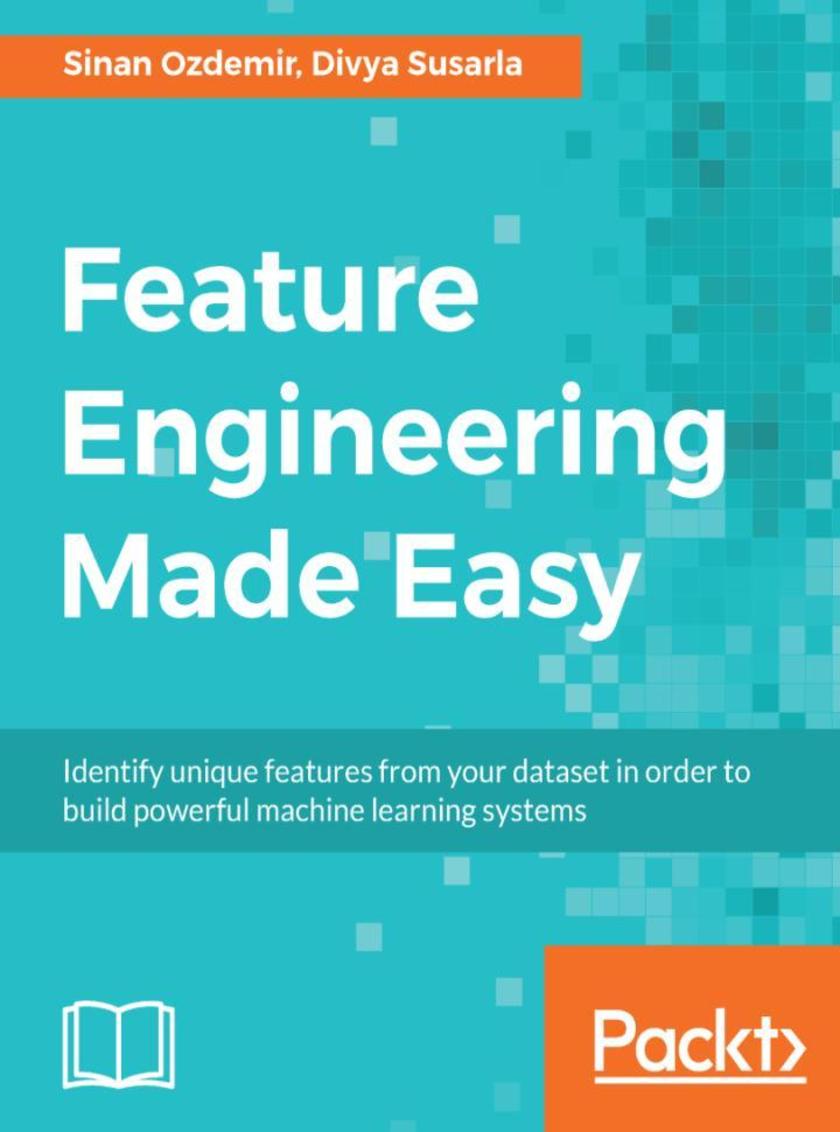
Feature Engineering Made Easy
¥73.02
A perfect guide to speed up the predicting power of machine learning algorithms About This Book ? Design, discover, and create dynamic, efficient features for your machine learning application ? Understand your data in-depth and derive astonishing data insights with the help of this Guide ? Grasp powerful feature-engineering techniques and build machine learning systems Who This Book Is For If you are a data science professional or a machine learning engineer looking to strengthen your predictive analytics model, then this book is a perfect guide for you. Some basic understanding of the machine learning concepts and Python *ing would be enough to get started with this book. What You Will Learn ? Identify and leverage different feature types ? Clean features in data to improve predictive power ? Understand why and how to perform feature selection, and model error analysis ? Leverage domain knowledge to construct new features ? Deliver features based on mathematical insights ? Use machine-learning algorithms to construct features ? Master feature engineering and optimization ? Harness feature engineering for real world applications through a structured case study In Detail Feature engineering is the most important step in creating powerful machine learning systems. This book will take you through the entire feature-engineering journey to make your machine learning much more systematic and effective. You will start with understanding your data—often the success of your ML models depends on how you leverage different feature types, such as continuous, categorical, and more, You will learn when to include a feature, when to omit it, and why, all by understanding error analysis and the acceptability of your models. You will learn to convert a problem statement into useful new features. You will learn to deliver features driven by business needs as well as mathematical insights. You'll also learn how to use machine learning on your machines, automatically learning amazing features for your data. By the end of the book, you will become proficient in Feature Selection, Feature Learning, and Feature Optimization. Style and approach This step-by-step guide with use cases, examples, and illustrations will help you master the concepts of feature engineering. Along with explaining the fundamentals, the book will also introduce you to slightly advanced concepts later on and will help you implement these techniques in the real world.
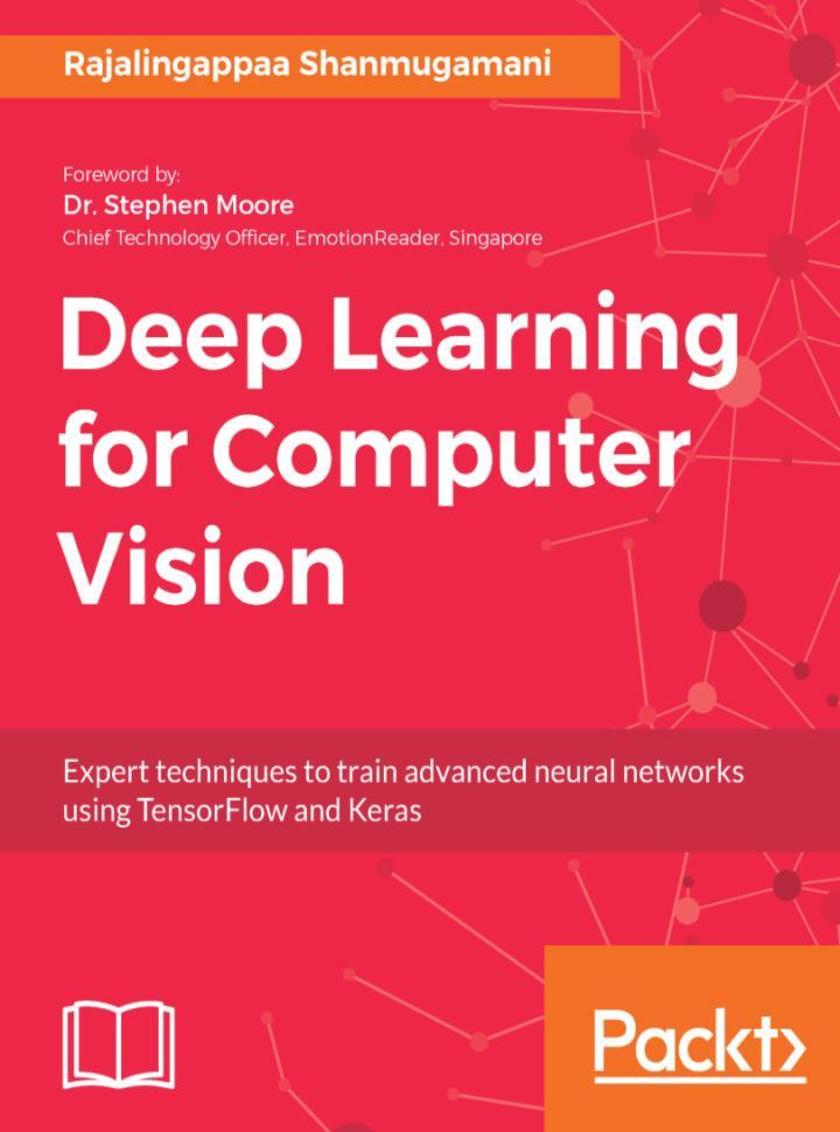
Deep Learning for Computer Vision
¥73.02
Learn how to model and train advanced neural networks to implement a variety of Computer Vision tasks About This Book ? Train different kinds of deep learning model from scratch to solve specific problems in Computer Vision ? Combine the power of Python, Keras, and TensorFlow to build deep learning models for object detection, image classification, similarity learning, image captioning, and more ? Includes tips on optimizing and improving the performance of your models under various constraints Who This Book Is For This book is targeted at data scientists and Computer Vision practitioners who wish to apply the concepts of Deep Learning to overcome any problem related to Computer Vision. A basic knowledge of programming in Python—and some understanding of machine learning concepts—is required to get the best out of this book. What You Will Learn ? Set up an environment for deep learning with Python, TensorFlow, and Keras ? Define and train a model for image and video classification ? Use features from a pre-trained Convolutional Neural Network model for image retrieval ? Understand and implement object detection using the real-world Pedestrian Detection scenario ? Learn about various problems in image captioning and how to overcome them by training images and text together ? Implement similarity matching and train a model for face recognition ? Understand the concept of generative models and use them for image generation ? Deploy your deep learning models and optimize them for high performance In Detail Deep learning has shown its power in several application areas of Artificial Intelligence, especially in Computer Vision. Computer Vision is the science of understanding and manipulating images, and finds enormous applications in the areas of robotics, automation, and so on. This book will also show you, with practical examples, how to develop Computer Vision applications by leveraging the power of deep learning. In this book, you will learn different techniques related to object classification, object detection, image segmentation, captioning, image generation, face analysis, and more. You will also explore their applications using popular Python libraries such as TensorFlow and Keras. This book will help you master state-of-the-art, deep learning algorithms and their implementation. Style and approach This book will teach advanced techniques for Computer Vision, applying the deep learning model in reference to various datasets.




 购物车
购物车 个人中心
个人中心



